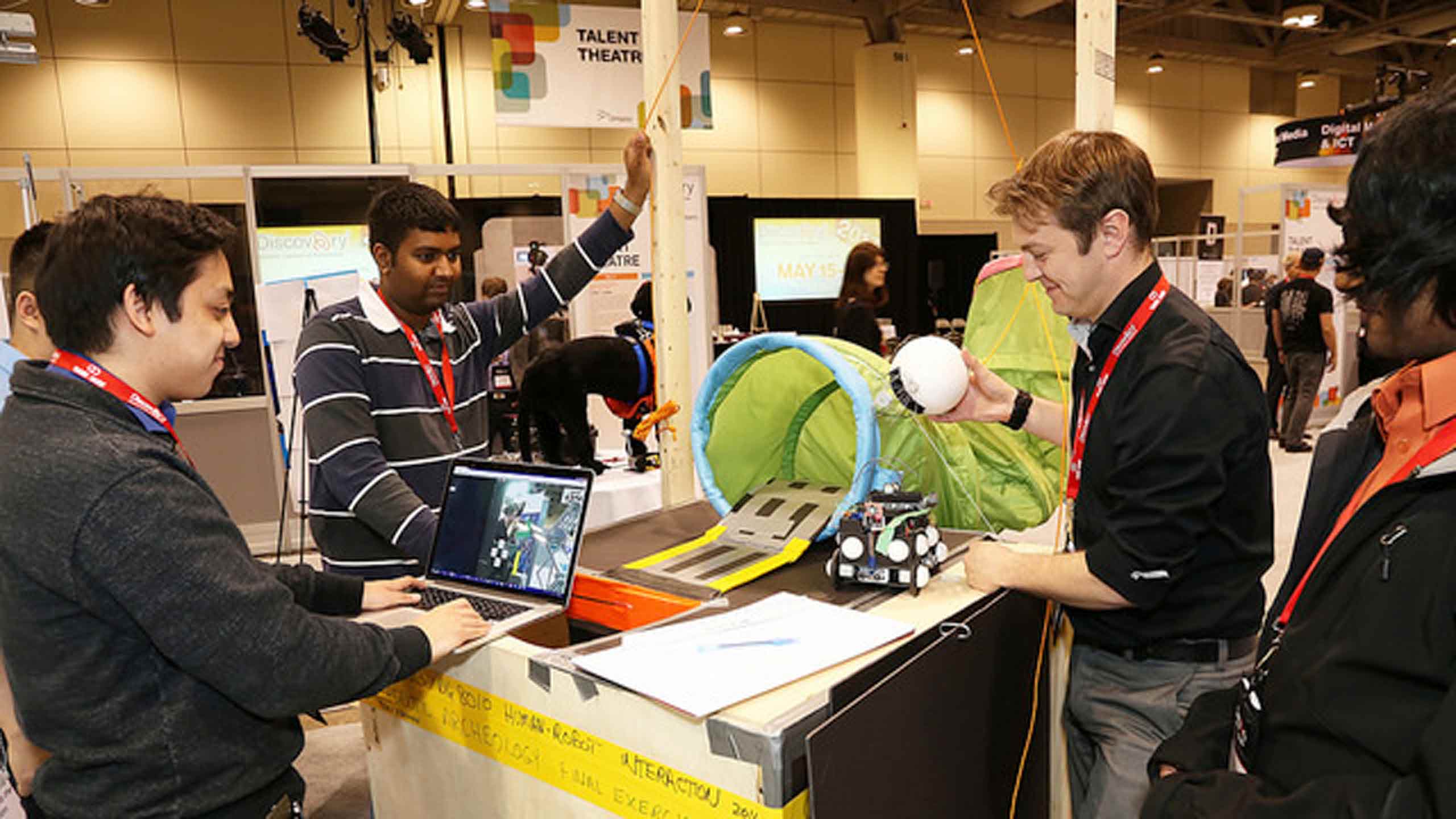By Noella Ovid
An ongoing robotic project at Ryerson could help researchers access unstable archeological dig sites.
At the end of last semester, students from Ryerson professor Alexander Ferworn’s Human Robotic Interaction (HRI) class designed six remote-operated devices with the objective of exploring underground tunnels in the ancient city of el-Hibeh, Egypt.
The students tested their robots in a simulated underground cave as part of their final exam. The demonstration took place on April 26 at the Ryerson Student Learning Centre and marked the end of an initial phase of brainstorming and development.
Ryerson professor and leading researcher Jean Li and her team are currently working on developing prototypes that can be brought to el-Hibeh to field test this winter.
El-Hibeh is a well-preserved archeological site dating back to the first millennium BC.
But, as a result of the Egyptian Revolution in 2011, a lot of the archaeological material has been damaged or heavily looted.
Li began this interdisciplinary collaboration project between Ryerson’s computer sciences, digital media and history departments after getting inspiration to return to el-Hibeh and assess the damage.
“This is one of these issues of how do we … use the resources we have here at Ryerson, use the innovation, the technology, the interdisciplinary [elements] at Ryerson to come up with a solution for a real world problem that also helps disseminate knowledge, that helps highlight the crisis of cultural heritage that’s going on not just in Egypt but all over the world,” said Li.
She reached out to Michael Carter, director of industry relations and Ferworn, program director at the Master of Digital Media (MDM), about the partnership.
Ferworn presented the HRI course as a joint offering to undergraduates in computer science and graduates from the MDM programs.
“The thing they share in common is that they have to do a project night together and I made it mandatory that MDM students must work with computer science students and computer science students must work with MDM students. There’s no way of doing it without collaboration,” said Ferworn.
The project became known as the BUSA dig project, named after the play tunnel purchased from Ikea. Students had to get their robot into the tunnel and inside a chamber in which they couldn’t see the inside. They then had to drive around and find artifacts within the chamber without setting off booby traps that could damage their robots.
“I provided very little guidance apart from ‘here’s the tunnel, here’s the chamber, it’s going to be full of stuff and you have to find everything in it but then you have to get your robot out of it,’” said Ferworn.
There were six groups, each operating their own robot, who came up with different strategies for solving the problem in the span of three weeks.
“We had to come up with something and sort of hypothesize what we might get and then when we get on to the actual environment, it was you sort of learned on the go,” said Rob Blain, an MDM student who took part in the exam.
Some students used coffee sticks to make sure they didn’t touch anything while others used wiffle balls for armour and solar sensors to determine the elevation of the ceiling. One group even used web streaming and operated their robot from Montreal.
“People tried everything,” said Ferworn. “The students kind of worked as guinea pigs so their work we used to inform what we will do [in real life].”
The next step in the project is to get more institutional funding from Ryerson.
Blain continued working on his robot after the exam and investigated the idea of how to build a robot for a novice driver through user testing.
“[Blain] has a working prototype which we’re kind of basing any future endeavour on, so we’re going to actually try and do this for real, should Jean Li get funding for actually going there to do more exploration,” Ferworn said.











Leave a Reply